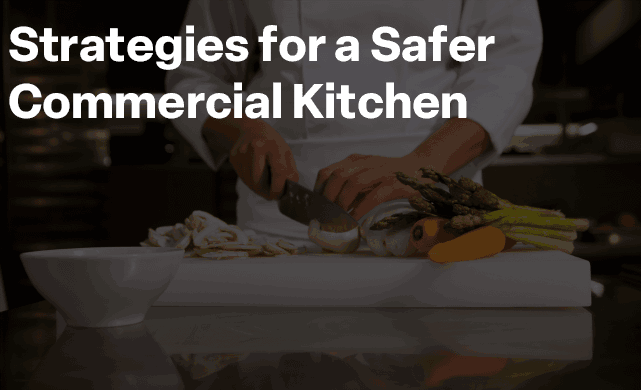Strategies for a Safer Commercial Kitchen
Running a restaurant or catering business means you’re responsible for the health and safety of countless people. One of the biggest challenges in food service is preventing cross-contamination, which can lead to serious health risks and damage your reputation. By adopting smart strategies and adhering to best practices, you can keep your kitchen hygienic while delivering delicious meals. Let’s dive into some innovative ways to stop cross-contamination in its tracks. 1. Streamlined Workflow:
A well-organized workflow is key to avoiding cross-contamination. Set up distinct zones for various tasks like food prep, cooking, and cleaning. This ensures that raw and cooked foods never mix. Additionally, use color-coded tools—like cutting boards and utensils—to easily distinguish between different types of food. It’s an easy step that makes a big difference. 2. Proper Hand Hygiene:
Your team’s hands are the most common carriers of germs in the kitchen. Teach everyone to wash their hands regularly with warm water and antibacterial soap. Place handwashing stations strategically around the kitchen with clear instructions. Consider launching a hand hygiene training session to underscore how important it is to keep hands clean. A little education goes a long way toward keeping your kitchen safe. 3. Utensil and Equipment Cleaning:
Maintaining spotless utensils and equipment is non-negotiable. Create a rigorous cleaning schedule to sanitize everything after each use. Invest in quality dishwashers and make sure your staff is trained to clean properly. Use color-coded cleaning tools so there’s no confusion about what gets used where. Consistent cleanliness is the backbone of a safe kitchen. 4. Separating Raw and Ready-to-Eat Foods:
The simplest way to avoid cross-contamination is to keep raw and ready-to-eat foods apart. Use separate cutting boards and utensils for meats, poultry, and seafood. Store these items in the fridge below ready-to-eat foods to prevent juices from dripping onto other items. Label everything clearly and store raw foods at lower temperatures to minimize bacterial growth. 5. Staff Training and Education:
Even the best systems won’t work without properly trained staff. Conduct regular training sessions that cover hygiene, food handling, and kitchen safety. Foster open communication among employees and encourage them to suggest improvements. Continuous learning keeps your team sharp and your kitchen safer. 6. Allergen Management:
Allergens pose another major risk of cross-contamination. Treat allergen handling with utmost seriousness. Store allergenic ingredients separately and clearly label them. Train your staff to recognize common allergens and follow strict protocols when preparing allergen-free meals. Even small mistakes can have serious consequences. 7. Regular Inspections and Audits:
Schedule routine checks to catch potential issues before they become problems. Assess cleanliness, organization, and adherence to protocols during these inspections. Keep detailed records and address any violations immediately. Staying updated on food safety regulations will help you stay ahead of the curve.
Building a Culture of Safety:
Preventing cross-contamination isn’t just good practice—it’s a moral obligation. By implementing these strategies, you’ll create a safer space for your team and customers alike. From organizing your workflow to training your staff and managing allergens, every detail counts. Embrace these practices and inspire a culture of safety in your kitchen. Your business will thrive as a result.

Inflow screen rotor,Hydrapulper Impeller,Hydrapulper rotor
Huatao Group , https://www.huataofilter.com



